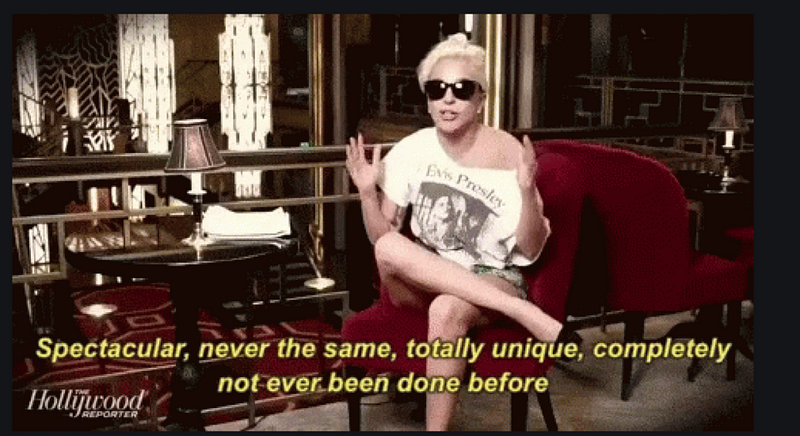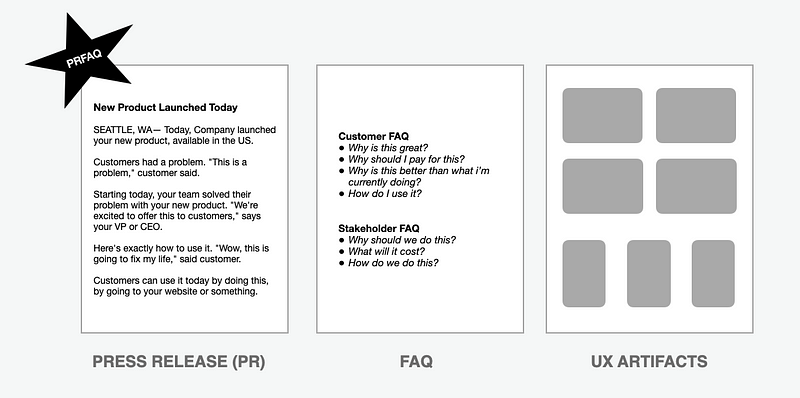PRFAQ is a Design Tool
Let’s turn a business document into a design tool! Use it in your own toolkit — or to help build a design-as-partner culture at your company.
Let’s turn a business doc into a design tool!
For 7 years, I coached people on how to write PRFAQs at Amazon as a Document Bar Raiser. They’re typically written by Program or Product Managers, but I think designers should write them too. And as a long-time instructor at the company’s UX Bootcamp for new hires, I encouraged —insisted! — that designers write these themselves instead of being downstream of the process. It was my mission to champion and establish actionable paths to “design as a partner, not a service” at the company, and I continue see PRFAQs as a powerful exercise that can be used far beyond those walls to empower designers and elevate the design of any user experience.
Um, Some Context Would Be Helpful
Let’s get that acronym out of the way.
PR = Press Release
FAQ = Frequently Asked Questions
It’s a document format and process somewhat-famously (in business circles, anyway) born at Amazon to define and align on new products. You write one when something is a twinkle in your eye. Then, through a magical process of everyone coming to understand and agree what they’re going to build — and (more importantly?) if they should even do it in the first place, you build the thing. Amazon Prime was a PRFAQ. AWS was a PRFAQ. Alexa was PRFAQ. You can read more here if you want:
[embed]https://www.forbes.com/sites/innovatorsdna/2017/08/08/how-does-amazon-stay-at-day-one/?sh=3ad662b57e4d[/embed]
But we’re not going to talk about them today.
Let’s talk about how you can use this in your design toolkit to invent, define, and build great experiences for real people — whether you work in-house or with clients.
While I discuss this here as a document, it’s more about a process that can be used to inform concept work, client presentation, personas, user research and testing, etc. (How I started writing them myself was to frame and clarify my own thinking in addition to the usual iterative and creative processes.) It’s a framework for storytelling that’s especially useful for innovation and future-thinking spaces.
Reality Check through Empathy
Harnessing the magick of PRFAQs, you can:
Visualize experiences that don’t exist yet.
Walk through exactly what it would be like for someone to use or experience it in a way that anyone can understand.
Get real about if /why someone would actually need or want to use it.
Why the business should care about it or build it.
Ask and answer the hard questions that would potentially come from the user or client (whether internal or external).

You want this energy.
PRFAQ 101 (the 1-Minute Version)
Here’s the ultra-quickie version of the course:
Press Release: Future shock! Pretend your thing has launched in the future. Next month, next year, 5 years from now. It’ll be in magazines, newspapers, social media. Wow! It’s totally amazing and: Why should anyone care? Who should care? What real problem am I actually solving? How is it new or cool or different from what already exists? What does it do exactly? Where can you find it?
FAQ: This has 2 sections, respectively Customer FAQ and Stakeholder (or Client) FAQ.
Then show it. Tell the story. In the simplest possible and low-fidelity way, help your client visualize or feel the experience. Depending on the product, this could be storyboards, workflow wireframes, audio/video files, etc.
In a nutshell:

I’ll share more in-depth instruction on to how write these in a later article — and how to further hack the format for design purposes — but that’s the gist of it.
Pro Tip: Pretend You’re a Person
In years of helping folks write these, the biggest and most common problem I’ve seen is people writing these with themselves as an audience. Here are the 2 main pitfalls, and luckily both have the same remedy:
Pitfall #1: Ignore the problem it will solve for a real person, instead just hype up cool features (or only how it will benefit the company).
Pitfall #2: Speak in technical or industry jargon.
Remedy!
Look out the window.
See someone on the street walking by.
Pretend they’re reading it. Try to read it through their eyes. Can they understand it? Does it make sense and appeal to someone who’s never heard of it before?
Let’s Do This
As human-centered design practices can inform other functional disciplines, so too can business practices empower design. Storytelling is a powerful tool to envision, energize, empathize, persuade, and execute around new user experiences.
Get out there and experiment with this and let me know how it goes. :)
…………………………….
Coming soon: PRFAQ: Design Remix with a detailed breakdown on how to write one.